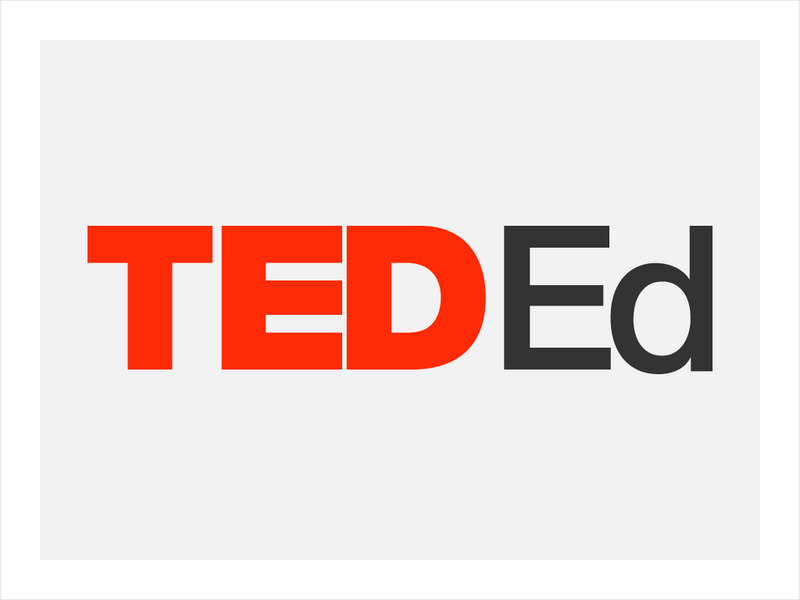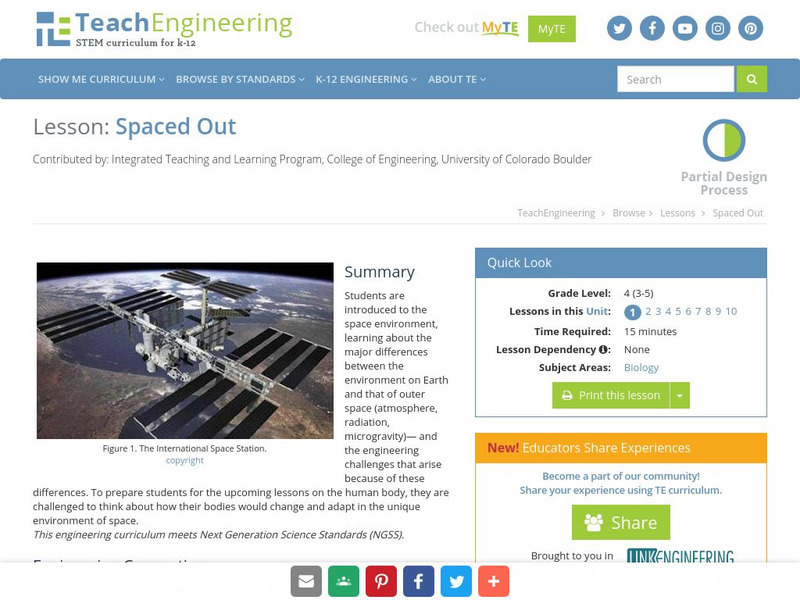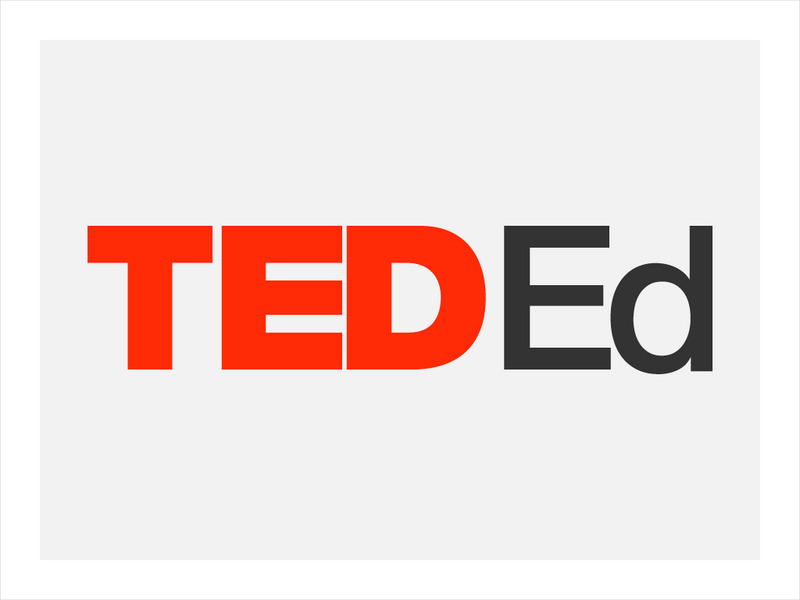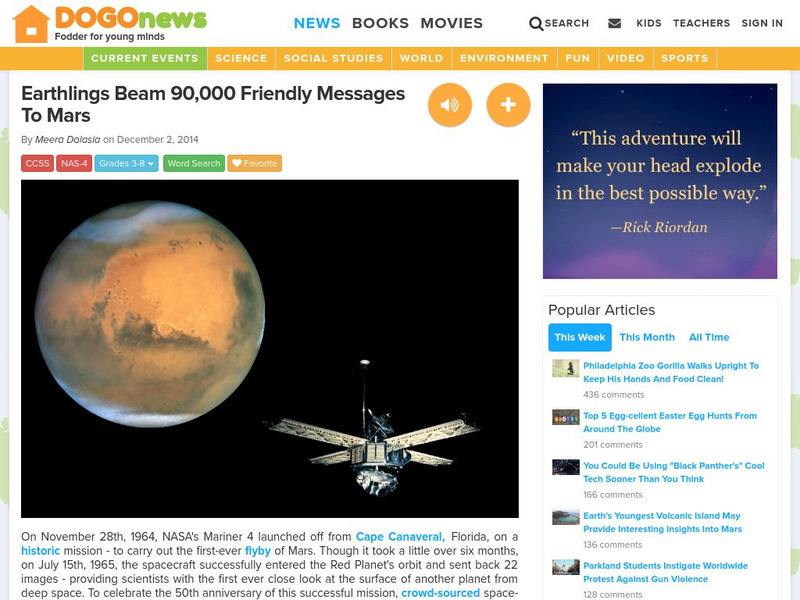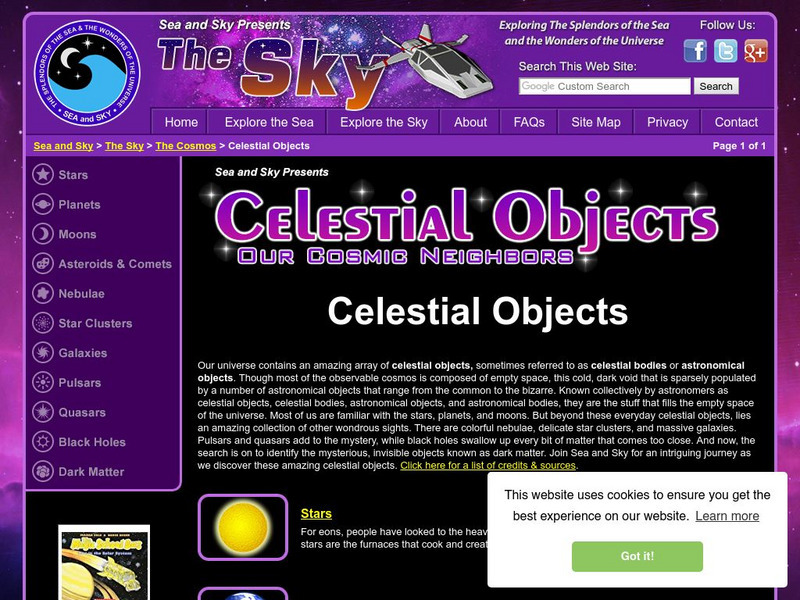TeachEngineering
Teach Engineering: Lunch in Outer Space!
Students learn about the unique challenges astronauts face while eating in outer space. They explore different food choices and food packaging. Students learn about the engineering design process, and then, as NASA engineering teams,...
BioEd Online
Bio Ed Online: Plants in Space
Lesson focuses on the Plants in Space experiment which studied how plant roots developed in a weightless environment. Students will conduct three scientific investigations to learn how light, gravity and microgravity affect the growth of...
Children's Museum
The Children's Museum of Indianapolis: Beyond Spaceship Earth
This unit of study explores the International Space Station through STEM experiences in space science education. Students become a spacecraft crew and launch from Earth to discover how microgravity affects the orbit of the International...
TED Talks
Ted: Ted Ed: What Outer Space Does to Your Body
NASA astronaut Scott Kelly and Mikhail Kornienko returned to Earth from a record breaking 340 days aboard the International Space Station. Ever wonder what happens to someone's body when they are in space? Listen on and find out. [2:00]
PBS
Pbs Learning Media: Astronauts in Hard Hats: Challenges of Working in Space
This media-rich series of interviews from the NOVA: "Stationed in the Stars" Web site explores the unique challenges faced by astronauts doing construction work in outer space.
TeachEngineering
Teach Engineering: Spaced Out
This lesson introduces students to the space environment. It covers the major differences between the environment on Earth and that of outer space and the engineering challenges that arise because of these discrepancies. In order to...
TeachEngineering
Teach Engineering: Destination Outer Space
Students acquire a basic understanding of the science and engineering of space travel as well as a brief history of space exploration. They learn about the scientists and engineers who made space travel possible and briefly examine some...
TED Talks
Ted: Ted Ed: A Trip Through Space to Calculate Distance
Imagine two aliens racing across outer space to their moon. Who can we deem the fastest alien? With DIRT- or the equation Distance = Rate x Time- we can calculate their rates, using the distance they traveled and the time they took....
EL Education
El Education: Space Illustrated
Students gather information through research, local experts, and personal observations to answer their questions about space. The information is then written into articles and students compile them as well as illustrations, games,...
DOGO Media
Dogo News: Earthlings Beam 90,000 Friendly Messages to Mars
Article reports on recent mission by a private space company to beam messages to Mars from Earth. Includes video.
Other
Northrop Grumman Corporation: Into the Unknown: Resources
The Northrop Grumman Corporation provides numerous resource about outer space and beyond.
PBS
Pbs Learning Media: Astronaut Gene Cernan Speaks About Working in Space
In this audio resource from NOVA: "To the Moon," astronaut Gene Cernan recounts his harrowing experience during America's first attempt to do work in outer space.
Ducksters
Ducksters: Space Science: Astronomy for Kids
Kids learn about astronomy, the study of outer space including the stars, planets, comets, black holes, and the Solar System. History and astronomers in this astronomy for teachers and kids section.
TED Talks
Ted: Ted Ed: How Do We Study the Stars?
Yuan-Sen Ting takes us into deep space to show how astronomers study the stars beyond our reach. [4:46]
TeachEngineering
Teach Engineering: The Outer Planets
Students explore the outermost planets of our solar system: Saturn, Uranus and Neptune. They also learn about characteristics of Pluto and its interactions with Neptune. Students learn a little about the history of space travel as well...
TeachEngineering
Teach Engineering: Digestive System
The digestive system is amazing: it takes the foods we eat and breaks them into smaller components that our body can use for energy, cell repair and growth. This lesson introduces students to the main parts of the digestive system and...
Other
Sea and Sky: Celestial Objects
Empty space in outer space is not truly empty. Celestial objects fill the space not occupied by planets, stars, and such. This resource identifies these objects and further explains their existence.
TeachEngineering
Teach Engineering: Muscles, Muscles Everywhere
This activity helps students learn about the three different types of muscles and how outer space affects astronauts' muscles. They will discover how important it is for astronauts to get adequate exercise both on Earth and in outer...
PBS
Pbs Learning Media: Newton's Third Law: Action Reaction
An early astronaut's experiences teach students that Newton's third law of motion-for every action, there is an equal and opposite reaction-applies both on Earth and in outer space.
EL Education
El Education: What's Up?
An online book entitled What's Up? Frequently Asked Questions About Space by 3rd graders at Genesee Community Charter School in Rochester, New York. The book contains information about space and tools used to study space. Original...
American Institute of Biological Sciences
Action Bioscience: Looking for Life on Mars and Beyond
Learn some of the characteristics of Mars. These characteristics lead some people to believe that life forms may be found on the fourth planet from the Sun.
PBS
Pbs Learning Media: Aerospace Engineering
This collection of Aerospace Engineering learning modules will allow students to explore video and interactive media resources that support the middle and high school Engineering Design core ideas.
Other popular searches
- Outer Space Preschool
- Planets Outer Space
- Outer Space Art
- Living in Outer Space
- Math and Outer Space
- Outer Space Kwl Chart
- Outer Space Travel
- Outer Space Art Lesson
- Art and Outer Space
- Music About Outer Space
- Outer Space Hotel
- Outer Space Kl Chart



